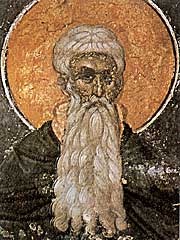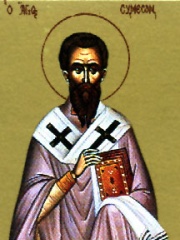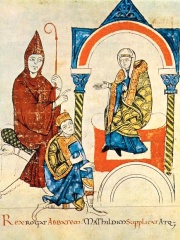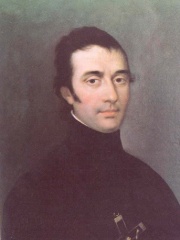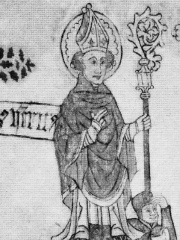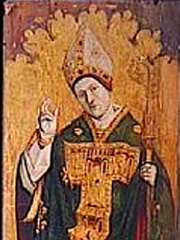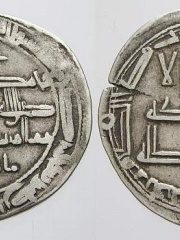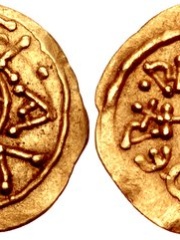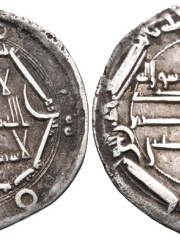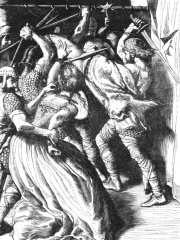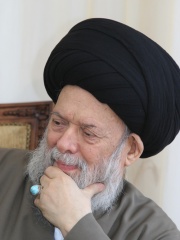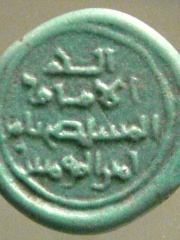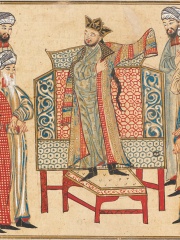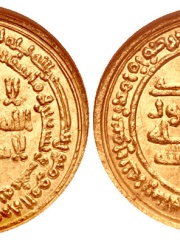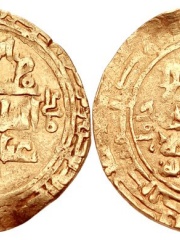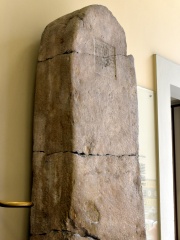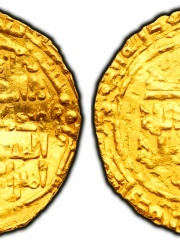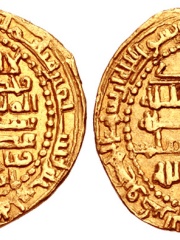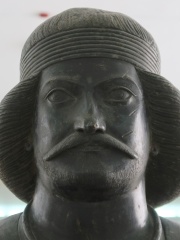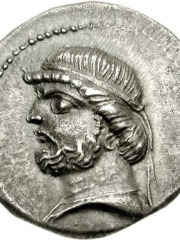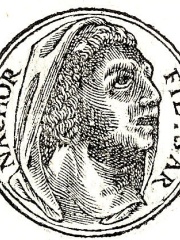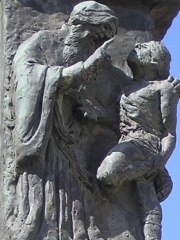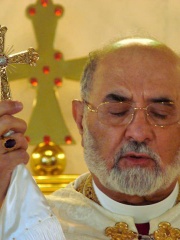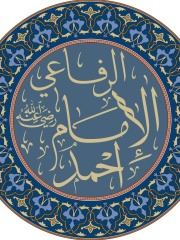RELIGIOUS FIGURE
Abo of Tiflis
756 - 786
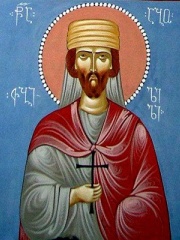
 Abo of Tiflis
Abo of Tiflis
Abo of Tiflis (Arabic: أبو التفليسي, romanized: Abu al-Tiflisi; Georgian: აბო თბილელი, romanized: abo tbileli; c. 756 – 6 January 786) was a Christian martyr of Arab origin, who went on to practice his faith in what is now Tbilisi, the capital of present-day Georgia. Read more on Wikipedia
His biography is available in 24 different languages on Wikipedia (up from 23 in 2024). Abo of Tiflis is the 1,170th most popular religious figure (down from 1,166th in 2024), the 153rd most popular biography from Iraq (up from 173rd in 2019) and the 18th most popular Iraqi Religious Figure.
Memorability Metrics
Page views of Abo of Tiflis by language
Among RELIGIOUS FIGURES
Among religious figures, Abo of Tiflis ranks 1,170 out of 3,187. Before him are Yves Congar, Arsenius the Great, Jakob Ammann, Sai Baba of Shirdi, Jeanne Guyon, and Shemon Bar Sabbae. After him are 11th Dalai Lama, Rose of Viterbo, Hugh of Cluny, Eugène de Mazenod, Henry, and Caesarius of Arles.
Most Popular Religious Figures in Wikipedia
Go to all RankingsYves Congar
1904 - 1995
HPI: 65.56
Rank: 1,164
Arsenius the Great
354 - 449
HPI: 65.55
Rank: 1,165
Jakob Ammann
1644 - 1730
HPI: 65.51
Rank: 1,166
Sai Baba of Shirdi
1835 - 1918
HPI: 65.49
Rank: 1,167
Jeanne Guyon
1648 - 1717
HPI: 65.49
Rank: 1,168
Shemon Bar Sabbae
350 - 344
HPI: 65.48
Rank: 1,169
Abo of Tiflis
756 - 786
HPI: 65.48
Rank: 1,170
11th Dalai Lama
1838 - 1856
HPI: 65.48
Rank: 1,171
Rose of Viterbo
1233 - 1252
HPI: 65.45
Rank: 1,172
Hugh of Cluny
1024 - 1109
HPI: 65.44
Rank: 1,173
Eugène de Mazenod
1782 - 1861
HPI: 65.43
Rank: 1,174
Henry
1100 - 1156
HPI: 65.42
Rank: 1,175
Caesarius of Arles
470 - 542
HPI: 65.42
Rank: 1,176
Contemporaries
Among people born in 756, Abo of Tiflis ranks 1. After him is Ibrahim I ibn al-Aghlab. Among people deceased in 786, Abo of Tiflis ranks 3. Before him are Desiderius, and Al-Hadi. After him are Cynewulf of Wessex, and Lullus.
Others Born in 756
Go to all RankingsAbo of Tiflis
RELIGIOUS FIGURE
756 - 786
HPI: 65.48
Rank: 1
Ibrahim I ibn al-Aghlab
POLITICIAN
756 - 812
HPI: 61.18
Rank: 2
Others Deceased in 786
Go to all RankingsDesiderius
POLITICIAN
710 - 786
HPI: 71.97
Rank: 1
Al-Hadi
POLITICIAN
764 - 786
HPI: 71.01
Rank: 2
Abo of Tiflis
RELIGIOUS FIGURE
756 - 786
HPI: 65.48
Rank: 3
Cynewulf of Wessex
POLITICIAN
750 - 786
HPI: 60.57
Rank: 4
Lullus
RELIGIOUS FIGURE
710 - 786
HPI: 58.43
Rank: 5
In Iraq
Among people born in Iraq, Abo of Tiflis ranks 153 out of 384. Before him are Mohammad Hussein Fadlallah (1935), Ibn Sa'd (784), Al-Mustadi (1142), Al-Qadir (947), Al-Muqtafi (1096), and Al-Mustazhir (1078). After him are Shammuramat (-900), Al-Mustanjid (1124), Ovadia Yosef (1920), At-Ta'i (932), Surena (-84), and Phraates II (-200).
Others born in Iraq
Go to all RankingsMohammad Hussein Fadlallah
RELIGIOUS FIGURE
1935 - 2010
HPI: 65.96
Rank: 147
Ibn Sa'd
RELIGIOUS FIGURE
784 - 845
HPI: 65.86
Rank: 148
Al-Mustadi
POLITICIAN
1142 - 1180
HPI: 65.79
Rank: 149
Al-Qadir
POLITICIAN
947 - 1031
HPI: 65.79
Rank: 150
Al-Muqtafi
POLITICIAN
1096 - 1160
HPI: 65.76
Rank: 151
Al-Mustazhir
POLITICIAN
1078 - 1118
HPI: 65.49
Rank: 152
Abo of Tiflis
RELIGIOUS FIGURE
756 - 786
HPI: 65.48
Rank: 153
Shammuramat
POLITICIAN
900 BC - 800 BC
HPI: 65.33
Rank: 154
Al-Mustanjid
POLITICIAN
1124 - 1170
HPI: 65.30
Rank: 155
Ovadia Yosef
POLITICIAN
1920 - 2013
HPI: 65.28
Rank: 156
At-Ta'i
POLITICIAN
932 - 1003
HPI: 65.21
Rank: 157
Surena
MILITARY PERSONNEL
84 BC - 52 BC
HPI: 65.17
Rank: 158
Phraates II
POLITICIAN
200 BC - 127 BC
HPI: 65.15
Rank: 159
Among RELIGIOUS FIGURES In Iraq
Among religious figures born in Iraq, Abo of Tiflis ranks 18. Before him are Ibn Hisham (701), Nahor, son of Serug (-1912), Hillel the Elder (-110), Ibn Qutaybah (828), Mohammad Hussein Fadlallah (1935), and Ibn Sa'd (784). After him are Dinkha IV (1935), Ignatius Zakka I Iwas (1931), Suhayb ar-Rumi (587), Ahmad al-Rifaʽi (1118), Dawud al-Zahiri (815), and Muhammad Baqir al-Sadr (1935).
Ibn Hisham
701 - 833
HPI: 70.58
Rank: 12
Nahor, son of Serug
1912 BC - 1764 BC
HPI: 70.15
Rank: 13
Hillel the Elder
110 BC - 10
HPI: 69.20
Rank: 14
Ibn Qutaybah
828 - 889
HPI: 68.10
Rank: 15
Mohammad Hussein Fadlallah
1935 - 2010
HPI: 65.96
Rank: 16
Ibn Sa'd
784 - 845
HPI: 65.86
Rank: 17
Abo of Tiflis
756 - 786
HPI: 65.48
Rank: 18
Dinkha IV
1935 - 2015
HPI: 64.98
Rank: 19
Ignatius Zakka I Iwas
1931 - 2014
HPI: 64.37
Rank: 20
Suhayb ar-Rumi
587 - 659
HPI: 64.00
Rank: 21
Ahmad al-Rifaʽi
1118 - 1182
HPI: 63.99
Rank: 22
Dawud al-Zahiri
815 - 883
HPI: 63.23
Rank: 23
Muhammad Baqir al-Sadr
1935 - 1980
HPI: 62.91
Rank: 24

